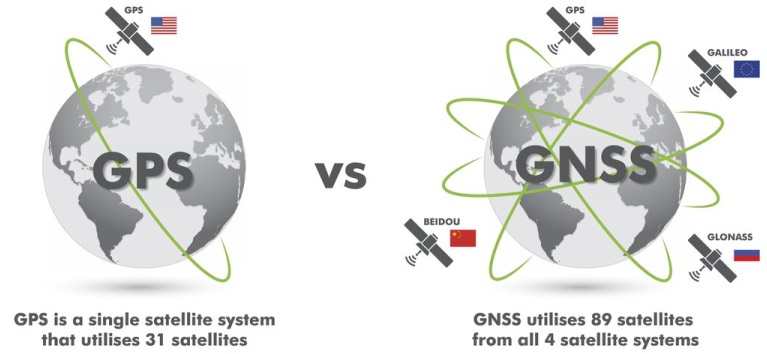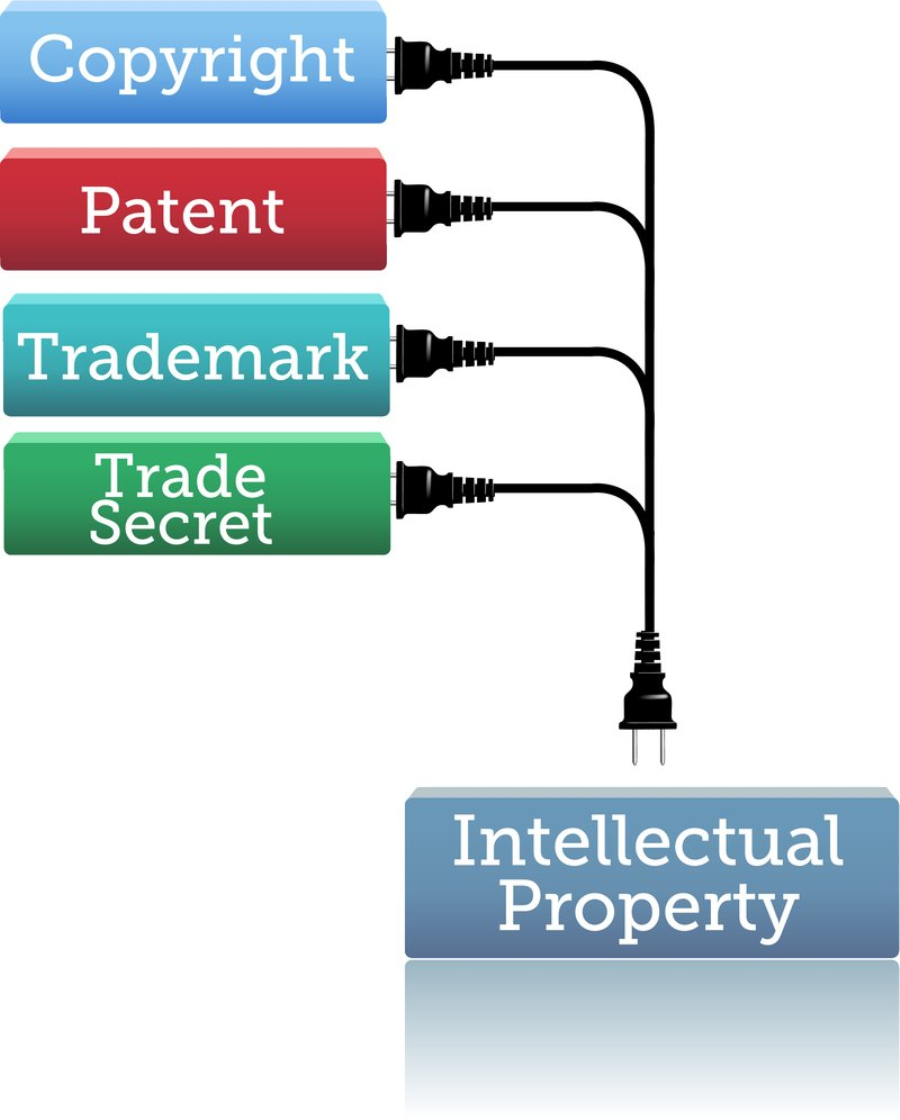GNSS Technologies
By China IPR SME Helpdesk
 全球导航卫星系统技术也称GNSS技术,是广泛应用于LBS、海运、公共监管服务、公路运输、农业、测量、航空、民防、地理地质等领域的技术。近年来随着全球导航卫星系统技术的发展,全新的应用正对现有需求进行改进、适应。GNSS是一个有利可图的市场,越来越多的应用和市场覆盖。 GNSS设备的主要市场是智能手机,智能手机在2017年的运营量约为25亿台。随着智能手机在发展中国家的使用普及,预计未来几年市场增长将更加迅速。受到智能手机需求量增加的推动,中国GNSS技术正在蓬勃发展,主要的GNSS公司的年营业额约为300亿欧元。因此,中国市场正越来越吸引外国制造商和软件开发商进入这片广阔蓝海。
全球导航卫星系统技术也称GNSS技术,是广泛应用于LBS、海运、公共监管服务、公路运输、农业、测量、航空、民防、地理地质等领域的技术。近年来随着全球导航卫星系统技术的发展,全新的应用正对现有需求进行改进、适应。GNSS是一个有利可图的市场,越来越多的应用和市场覆盖。 GNSS设备的主要市场是智能手机,智能手机在2017年的运营量约为25亿台。随着智能手机在发展中国家的使用普及,预计未来几年市场增长将更加迅速。受到智能手机需求量增加的推动,中国GNSS技术正在蓬勃发展,主要的GNSS公司的年营业额约为300亿欧元。因此,中国市场正越来越吸引外国制造商和软件开发商进入这片广阔蓝海。
需要注意的是,中国参与GNSS项目历史悠久,并于2000年启动了独立的中国系统,其名称为“北斗卫星导航试验系统”,并覆盖全国。今天,第三代北斗卫星定位系统(BDS)正在迅速扩张,目前有23颗卫星正在运行,新系统已为中国和亚太地区的客户提供服务,预计到2020年将实现全面覆盖。无论是中国政府还是独立服务提供商都在积极申请专利保护自己的技术成果,进入中国这一领域的外企更需要制定全面的知识产权战略。
注册自主商标品牌是保护自身专利技术的第一步,其中包括公司名称、商标、与品牌相关的标签。由于“先到先得”的政策,企业最好在进入中国市前尽早注册商标。除此外,设计专利、发明专利、软件和知识产权保护方面的专利申请也需要特别重视。这将帮助外来企业更好地从设计、外观、技术、产品等各方面保护公司利益。
 In an increasingly technologically advanced and interconnected world, technology utilising GNSS has risen year on year, with both entirely new applications being developed along with improvements and adaptations to existing technologies. GNSS technology has a wide range of applications including LBS, maritime transport, public regulated services, road transport, agriculture, surveying, aviation, civil protection and timing and synchronisation.
In an increasingly technologically advanced and interconnected world, technology utilising GNSS has risen year on year, with both entirely new applications being developed along with improvements and adaptations to existing technologies. GNSS technology has a wide range of applications including LBS, maritime transport, public regulated services, road transport, agriculture, surveying, aviation, civil protection and timing and synchronisation.
These technologies depend on a number of factors including ‘availability’ i.e. the percentage of time minimum number of satellites are in view, ‘indoor penetration’ i.e. the ability of signal to penetrate inside buildings, location accuracy, continuity of service and signal reliability. Success in the GNSS market depends on successful exploitation of technology to maximise the success of device’s abilities to transmit and receive in line with these dependant factors. This makes protection of IPR crucial to maintaining market advantage and providing adequate returns on research investment.
GNSS is a lucrative marketplace with a growing number of applications and market coverage. The primary market for GNSS devices is smartphones, with about 2.5 billion units in operation in 2017. This trend is expected to grow in the coming years as smartphone penetration continues throughout less economically developed regions.
China and GNSS
China has a long history of involvement in GNSS projects and in 2000 it launched an independent Chinese system which was dubbed ‘BeiDou Satellite Navigational Experimental System’ and provided coverage at national level. Today, the third generation of BeiDou Navigation Satellite System (BDS-3) is undergoing rapid expansion to provide global coverage. With 23 satellites currently in operation, the new system is already providing services to customers both in China as well as in the Asia-Pacific region and implementers expect full global coverage around 2020.
 Fueled by increasing demand for smartphone APPs, China’s output of GNSS technologies is booming, with an annual turnover of about 30 billion EUR for major GNSS companies. As such the Chinese market is becoming increasingly attractive to outside manufacturers and software developers seeking to take advantage of the potential of China’s GNSS market.
Fueled by increasing demand for smartphone APPs, China’s output of GNSS technologies is booming, with an annual turnover of about 30 billion EUR for major GNSS companies. As such the Chinese market is becoming increasingly attractive to outside manufacturers and software developers seeking to take advantage of the potential of China’s GNSS market.
As Chinese industry prepares to bring BeiDou products and technology into the international marketplace, the Chinese government is actively encouraging development of an internationally applicable knowledge base for related Intellectual Property Rights for GNSS related tech. Domestic players are also becoming increasingly IPR savvy, however, with record numbers of patent applications in the area, it is crucial that potential market entrants develop a comprehensive IPR strategy before jumping on the China-BeiDou bandwagon.
 IPR and Branding
IPR and Branding
As in any industry, reputation is the key to success for companies looking to operate in China. As such, obtaining protection for SME’s brand and associated products is essential to avoid potential misuse in the Chinese marketplace. As in the EU, this protection is primarily achieved through the use of registered trademarks, both for company name, logo and any tag-lines associated with the brand as well as those relating to individual products or service packages. Trade mark law is territorial so applications must be made separately, either directly with the China Trade Mark Office (CTMO) or through use of relevant extensions provided for in the international registration system laid out by the Madrid Protocol and administered by the World Intellectual Property Organisation (WIPO).
China operates a strict ‘first-to-file’ system for trademarks so it is essential to register any marks intended for use in China as early as possible, preferably before even entering the market. Companies which have failed to register early may find their trademarks already registered by domestic players, either to take advantage of the good reputation attached to the mark, or to sell the mark back to the European owner for an exorbitant fee. In addition to early registration there are some unique features of the Chinese trademark system that must be borne in mind when applying for registration in China.
 Perhaps the first consideration is the further sub-division of categories laid out in the Nice classification system. Companies that are conversant with the EU trademark registration system must remember to specify the sub-divisions relevant to their products, should they fail to do so the trade mark examiner handling the application may simply guess which categories are relevant and could leave important product categories unprotected. For example Class 9 sub-division 0907 covers ‘Electronic communication and navigation equipment’. However sub-division 0905 only protects ‘Measuring tools’.
Perhaps the first consideration is the further sub-division of categories laid out in the Nice classification system. Companies that are conversant with the EU trademark registration system must remember to specify the sub-divisions relevant to their products, should they fail to do so the trade mark examiner handling the application may simply guess which categories are relevant and could leave important product categories unprotected. For example Class 9 sub-division 0907 covers ‘Electronic communication and navigation equipment’. However sub-division 0905 only protects ‘Measuring tools’.
Secondly, the unique nature of China’s written language and tonal pronunciation make it advisable practice for EU SMEs to formulate a Chinese language name for both their company and their products. Whilst this is not a legal requirement to do business in China, failure to do so may lead to Chinese consumers imposing their own name on products with only European names. At the very least these names may not be flattering, Quaker Oats and Ralph Lauren being well known examples, now known in China as ‘Old man brand’ and ‘Three legged horse’ respectively. Furthermore, should this name then be left unprotected, competitors may freely adopt it, or even register the trademark rights for their own products and benefit from your hard won reputation. It is also good practice in China to consult with local public relations and marketing experts when choosing a Chinese name as differing meanings of characters can lead to simple transliterated names conveying a negative message to consumers.
IPR and hardware systems
Established developers and manufacturers of GNSS technologies will be well versed in the importance of patent protection for their inventions. However as a separate jurisdiction, prudence dictates that entry into and operation within the Chinese marketplace must be preceded by the development of a comprehensive patent portfolio in accordance with Chinese patent registration procedures. China offers different types of patent based on requirements and certain criteria:
Invention Patents: As in Europe, invention patents are granted for new and creative technical solutions or improvements to a product or process, provided that the technical solutions have a practical application. In China patents are not available for if they have been previously disclosed anywhere in the world before the patent application was filed in China.
Registration takes between 3-5 years. Once registration is completed inventions are granted 20 years of protection from the filing date subject to annuity fees.
Utility Model Patents: As in certain EU member states (Germany, Austria, Italy etc) Utility Model Patents or ‘UMs’ protect products which have a new shape or physical structure. As UM registrations are often granted on a shorter timescale than invention patents and require only a ‘formality’ examination, it is common practice to make a parallel application for an invention and a UM patent simultaneously, thus benefiting from short term protection of the UM until the invention patent is granted.
UM patent applications in China are usually granted within one year and offer 10 years protection from the filing date subject to payment of annuity fees.
 Design Patents: Design patents protect a product’s physical appearance, shape, colour, pattern or a combination of these features. It is worth noting that colour must be in conjunction with another feature in order to be registered as colour alone cannot suffice. Similarly where the colour constitutes the natural colour of the raw material of the product it will also not be able to form a part of the registered design.
Design Patents: Design patents protect a product’s physical appearance, shape, colour, pattern or a combination of these features. It is worth noting that colour must be in conjunction with another feature in order to be registered as colour alone cannot suffice. Similarly where the colour constitutes the natural colour of the raw material of the product it will also not be able to form a part of the registered design.
Design patents are applicable primarily to aesthetic features of products. Where the shape of a product serves a practical purpose, i.e. not just as an aesthetic feature, design patents may be vulnerable to invalidation; in these cases it is advisable to apply instead for an invention patent or UM patent. In recent years design patents have also been extended to cover Graphical User Interfaces (GUIs), even where these interfaces are not visible when a device is switched off.
As with other forms of patent, design patents have a requirement of novelty, and disclosure elsewhere, either outside or within China prior to filing for registration will render the patent invalid.
Design patent registrations are usually granted within a year of application and are valid for 10 years from the date of filing, subject to annuity fees.
 Semiconductor Topography
Semiconductor Topography
Registration of integrated circuit layout-design is available in China through the provisions laid out in the 2001 Regulations on the Protection of Layout-Design of Integrated Circuits (ICs). Registration must be made with the State Intellectual Property Office (SIPO) and once granted, the protection is valid for 10 years from the date of application or of the first commercial exploitation of the IC. No extensions are available for such registrations and requests for registrations can only be made up to two years after the first commercial exploitation of a layout-design.
It is important to note that registrations made by foreigners will only be accepted by SIPO if the IC is first exploited either in China or in a signatory state to the TRIPS agreement. Once granted the rights holder has the exclusive right to reproduce the protected layout-design or any component part of it and commercially exploit it as they see fit.
Software and IPR Protection
 Chinese copyright law provides specific protection of computer software. Copyright protection in China is automatic upon creation of the software in public domain. However, whilst this protection is theoretically extant from time of creation, Chinese courts will only accept physical, notarised evidence of copyright and will disregard any verbal or unwitnessed physical testimony. As such, it is generally advisable to register copyrights with the Copyright Protection Centre of China (CPCC), which will grant a certificate of copyright.
Chinese copyright law provides specific protection of computer software. Copyright protection in China is automatic upon creation of the software in public domain. However, whilst this protection is theoretically extant from time of creation, Chinese courts will only accept physical, notarised evidence of copyright and will disregard any verbal or unwitnessed physical testimony. As such, it is generally advisable to register copyrights with the Copyright Protection Centre of China (CPCC), which will grant a certificate of copyright.
For rapidly developing software which undergoes fundamental changes on a regular basis, for example web based software and applications or programs in ‘beta’ development released to a limited number of users, it is often impractical to apply for registration for each iteration of the software, a process which itself takes 30 days. As an alternative, software producers can have their software updates witnessed by a notary public who will prepare a document which constitutes valid evidence in Chinese courts. Where this document is generated outside of China, however, the claimant must legalise and domestically notarise the document for use in China.
Development, Research, Partnerships and Trade Secrets
Following market entry it will be necessary for EU SMEs to source distribution partners within China, as well as manufacturing partners and perhaps research and development staff where appropriate. It is important to ensure throughout dealings with any domestic partners and staff that the IPR of an SME and products remains protected and enforceable.
 Contracts, properly drafted and translated can provide comprehensive protection against partner infringement and leakage of trade secrets to competitors or the general public. Trade secrets in China are defined as: “Any non-public technical or business information with commercial value that is guarded by confidentiality measures.”
Contracts, properly drafted and translated can provide comprehensive protection against partner infringement and leakage of trade secrets to competitors or the general public. Trade secrets in China are defined as: “Any non-public technical or business information with commercial value that is guarded by confidentiality measures.”
Trade secrets are only protected under Chinese law if the claimant company is able to show that it had implemented a trade secret protection policy involving physical, technical and contractual measures. This must consist of physical barriers such as marking documents as confidential and locking them away when not in use, technical barriers such as IT security, and contractual barriers with appropriate terms of non-disclosure.
Contracts are the key both for protecting against leakage of trade secrets in the event of employee transfers to competing companies, as well as the protection of core IPRs when engaging with manufacturing and distribution partners.
---END---